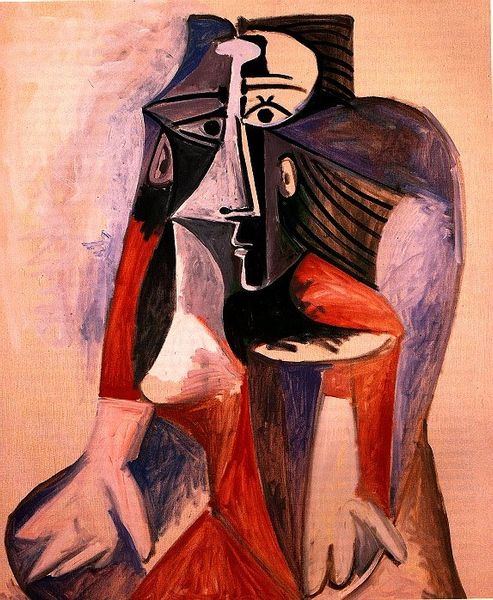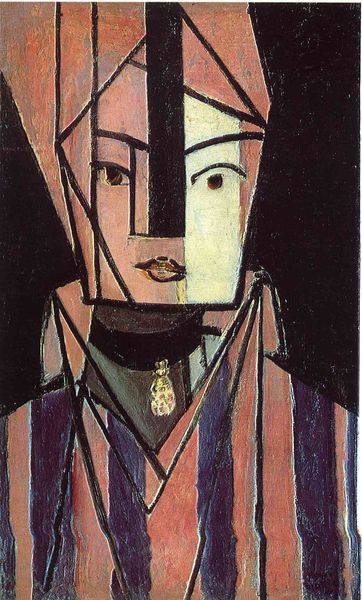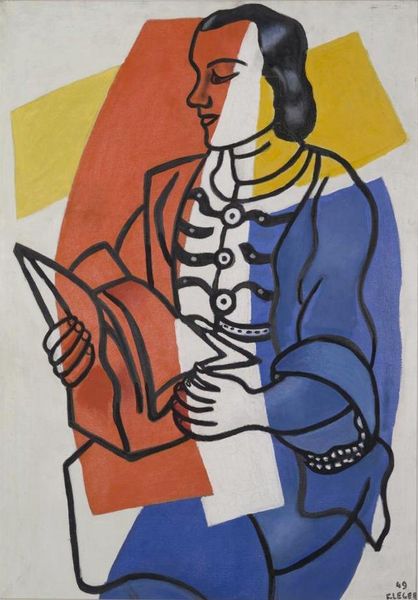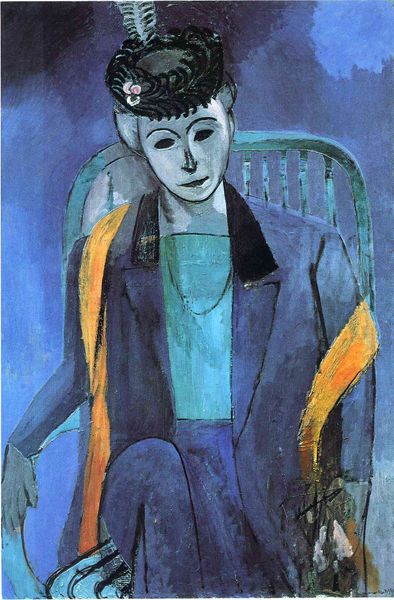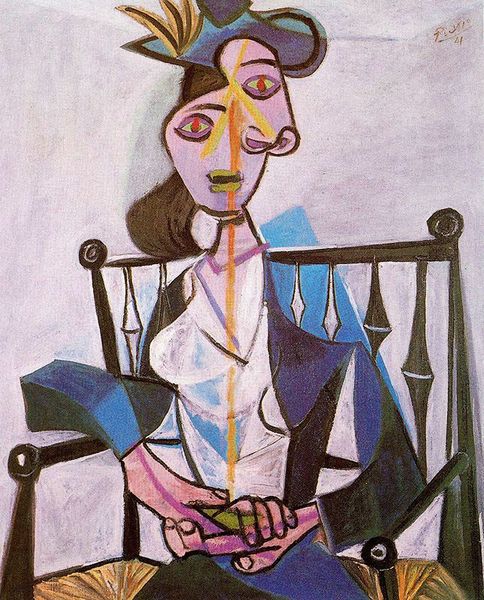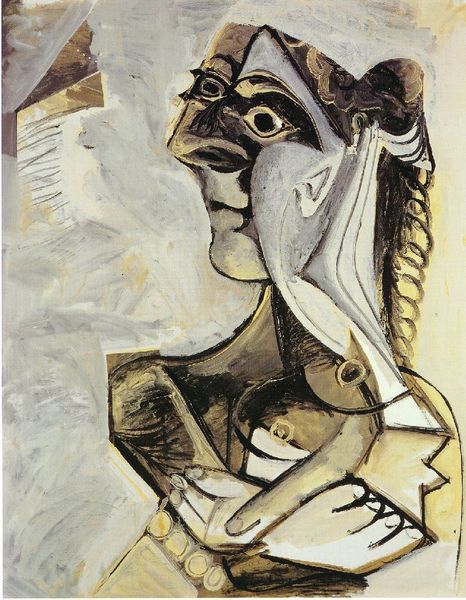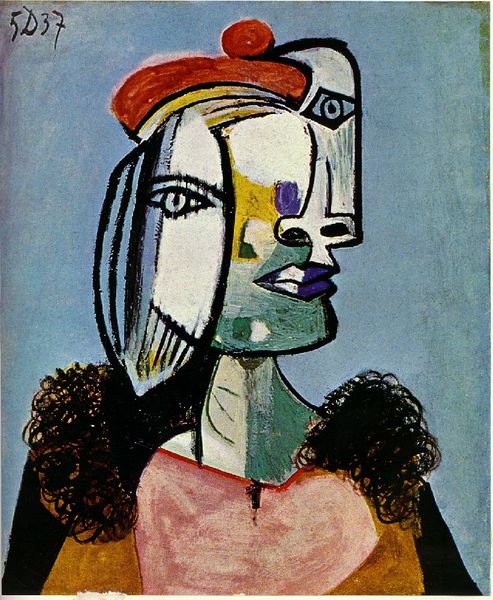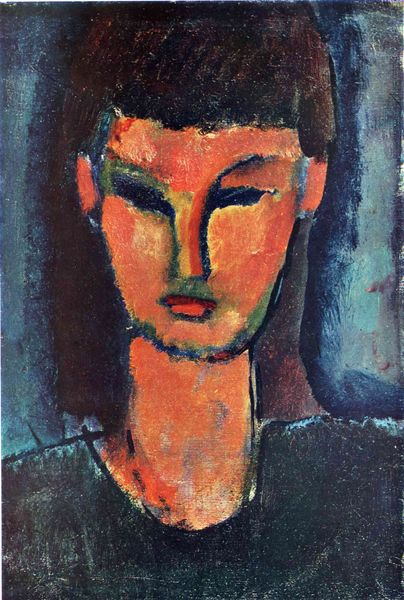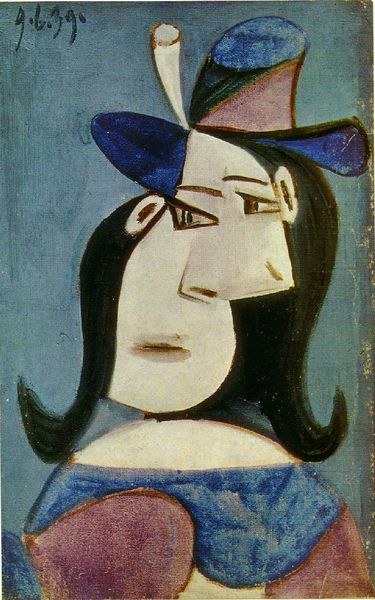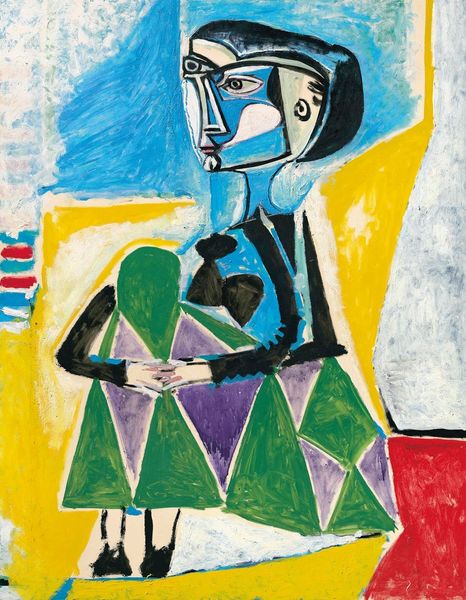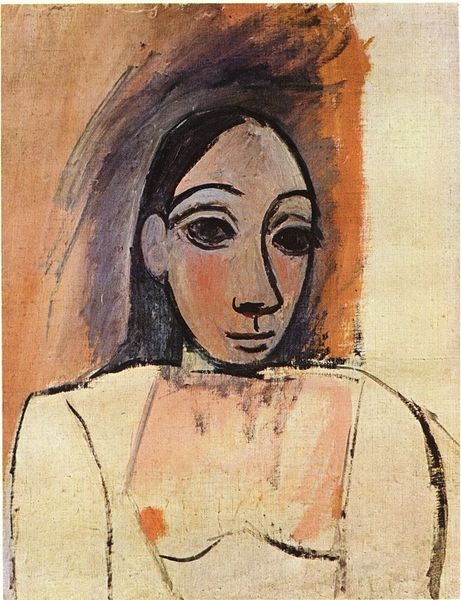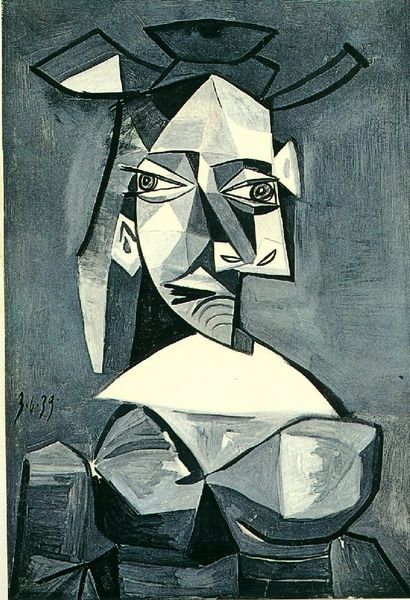
#
portrait
#
caricature
#
fine art element
#
handmade artwork painting
#
famous-people
#
fluid art
#
japanese art
#
male-portraits
#
facial painting
#
portrait drawing
#
watercolour illustration
#
portrait art
#
fine art portrait
Copyright: Pablo Picasso,Fair Use
Editor: So, here we have Picasso's "Harlequin with his hands crossed (Jacinto Salvado)", created in 1923. There's something very still and melancholic about it despite the vibrant colors of the Harlequin's costume. What strikes you when you look at this piece? Curator: Well, what immediately catches my attention is the interesting tension between the tradition of Commedia dell'Arte, which Harlequins embody – usually mischievous, energetic characters – and the way Picasso presents him here. He’s subdued, almost passively posed. The year it was created is key: 1923 was smack in the middle of Picasso's return to a more classical style after years of Cubism. Does the solemn figure perhaps reflect the disillusionment of the post-World War I era and the role of the artist in representing public feeling? Editor: That's fascinating! So, the painting isn’t just about a character, but a reflection of societal mood? How did institutions at the time, perhaps galleries or salons, react to Picasso moving away from Cubism and engaging with more traditional subject matter, like portraiture? Curator: The reception was mixed. Some saw it as a betrayal of the avant-garde spirit that had made Picasso famous. However, others praised his ability to reinvent himself while maintaining his unique artistic voice. Museums then, as now, played a huge role in legitimizing his new direction. Shows focusing on his “classical” period helped shape public perception. It speaks to how powerful the institutional framework is in dictating what’s seen as relevant, doesn’t it? Editor: It definitely does. I guess I always think of artistic movements as these organic things, but the institutions clearly had a hand in framing them. Curator: Absolutely. They legitimized and filtered artistic expression. Understanding those forces helps us appreciate, but also critically assess, how we interpret art. Editor: I hadn't thought of it that way before! Thanks, that’s really opened my eyes.
Comments
No comments
Be the first to comment and join the conversation on the ultimate creative platform.
